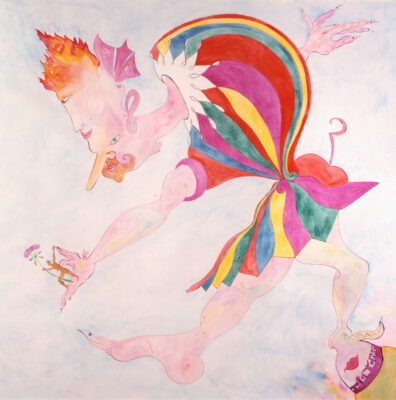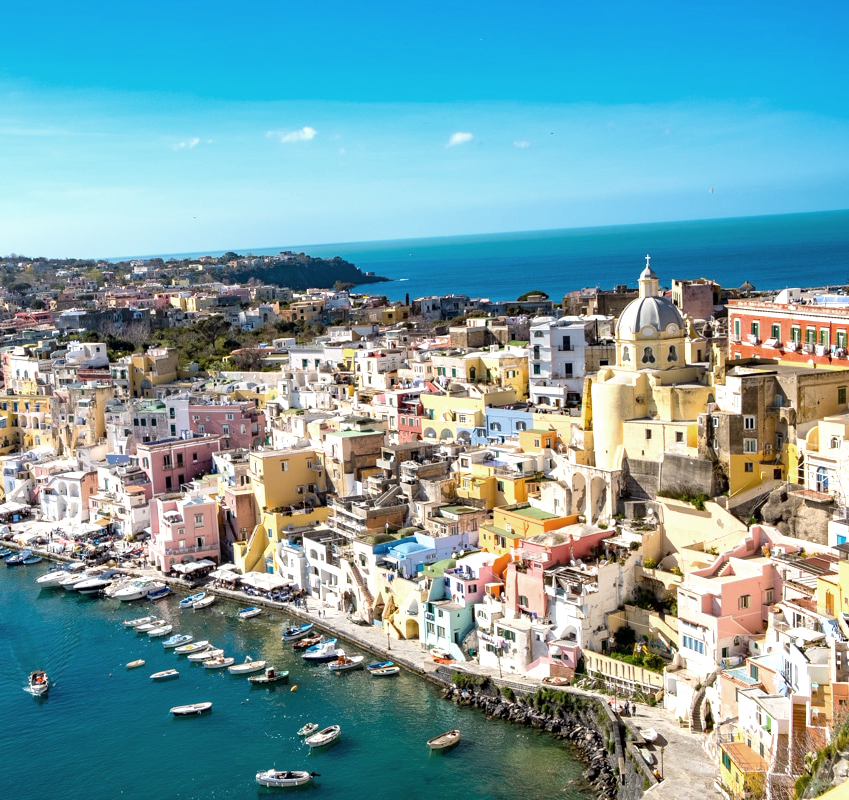Luigi Ontani was born on 24 November 1943 in Montovolo di Grizzana Morandi, near Vergato, a small village on the slopes of the Tuscan-Emilian Apennines. As a boy he loved reading, interested above all in Pasolini, Apollinaire, Joyce, Savinio, Marinetti and the Futurists, and he also revealed an early inclination towards poetry. His stay in Turin for his military service between 1963 and 1964 gave him the possibility of going to museums and galleries active, above all, in the avant-garde field. He made his first contacts with dealers and emergent artists.
The change came in 1965 when, in a general climate of rejection of traditional techniques, Ontani alternated painting with experiments that drew on the childlike sphere of play. His first “pleonastic objects” date from this period. He held his first shows in Bologna. His debut was in November 1965 in a group show organised by the Maccaferri industrial group, where he was employed. But his real debut came with his solo show at the Galleria Sanpetronio in the spring of 1967, where he showed watercolours, drawings, and “pleonastic” objects.
A fundamental step in his career was the solo show in January 1970 at the Galleria San Fedele, Milan, presented by Renato Barilli, a critic who even then had begun to follow the development of Ontani’s art. In the same year the artist decided to leave Vergato and move to Rome, where he was an assiduous frequenter of Galleria L’Attico run by Fabio Sargentini. In these years Luigi Ontani experiments with photography and creates the first "tableaux vivants". In 1974 he began to be noticed abroad due to his participation in some important shows in public institutions: Fotomedia at the Museumam Ostwald, Dortmund, and Transformer. Aspekte der Travestie at the Kunstmuseum in Lucerne. His first solo show in New York was held in October 1974 at the Sonnabend Gallery on West Broadway.
That Ontani had become well known abroad is confirmed by the relationships he established in Europe and America with cultural centres that put him into their programmes next to famous artists. The East and the exotic have always strongly appealed to the artist who, at the end of 1974, undertook his first journey to India. This was the beginning of his sepia water-coloured reproductions of harmonic colour ranges.
His participation in the group show Italian Art Now, opened at the Solomon R. Guggenheim Museum in New York in April 1982, was well received by the critics. Luigi Ontani was one of the seven artists invited to exhibit in various northern European cities in June 1980. In 1983 he had many prestigious exhibitions, amongst which a solo show at the Holly Solomon Gallery, New York, and exhibitions of Italian art from 1960 onwards, held in 1983 at the Hayward Gallery and at the Institute of Contemporary Arts in London.
Also to be mentioned was, in 1984, the exhibition Der Traum des Orpheus at the Stadtsche Galerie im Lembachhaus in Munich. Again in the same year, at the Università degli Studi, Rome, he presented La Sapienza, his first ceramic work made specifically for this occasion with Venera Finocchiaro. Still in 1984 he took part in the Venice Biennale in the Wunderkammer section; he was to be invited back again in 1995 by Gabriella Belli, for the occasion of the Biennale’s centenary, with a solo room in Padiglione Italia, where for the first time he exhibited the four “ermestetiche” works made in collaboration with the Bottega d’Arte Ceramica. The works exhibited in Venice were re-presented in the personal exhibition at the Galleria dello Scudo in winter of the same year, alongside works from the early 1980s as Autoritratto in cartamodelli dorati (1980-1981).
He held two important anthological exhibitions in 2001, at the P.S.1 Gallery, New York, and, from 2003 to 2004, at S.M.A.K. in Ghent. In 2008 he presented a wide-ranging solo show at MAMbo, Bologna, which was followed in successive years by shows at the Museo Capodimonte, Naples (2010), at the Castello di Rivoli, Turin (2001-2012), and at GAMeC, Bergamo (2014-2015).








